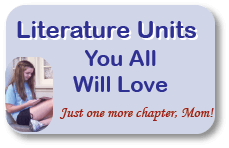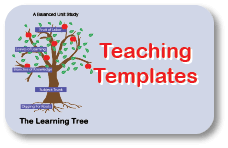Balanced Literacy: A Balanced Critique
Balanced literacy is used in an increasing number of classrooms and school districts. Like most educational models, this approach has its strengths and weakness. The purpose of this critique is to describe this model of literacy education and to assist parents in analyzing the role it might play in their child's education.
Read the assessments of others of balanced literacy below.
Share your own thoughts of this system.
What Is Balanced Literacy?
For over a century a discussion has taken place among educators as to whether a rule-based (ie phonics) instruction or a sight-word (whole langauge) instruction is superior. In the last decades the debate has entered the public and political arena and at times become heated. Numerous books have been written for the public promoting one method over the other. Read more about the great reading debate: phonics vs sight words.Simply stated, balanced literacy is an approach to language arts that attempts to promote literacy for all students using all effective models. Elements of phonics and whole language are utilized as well as other methods in order to improve literacy levels.
An Old Fashioned Fairy Tale
OR
How We Got Where We Are Today
Once upon a time there were many children who lived in a land called Rural America. Most of these children lived on farms or in small towns. They were often taught to read by their mothers. However, as time went on the towns built one room school houses so the children could learn together with one teacher. One of the towns' people (often a young woman) would teach children of multiple ages in these schools.
Books were scarce but most schools had copies of books such as McGuffey Readers which taught phonics. Children started going to school at about age 8 and stayed in the one room school house until approximately age 13. During those years they learned reading, writing, and arithmetic. When they turned 13, they usually left school to work on the farm, apprentice to a trade (including home-making) or went off to college in another town.
It was a great system. Advocates point out that these young scholars started out learning the alphabet with McGuffey Readers, and when they were finished with the four volumes they were reading at a level above most 21st century high school graduates can read today. These old fashioned scholars went straight from McGuffey to the King James Bible.
Of course, there were a few children who didn't thrive with that system. They were labeled as misfits, made to sit in the corner with a dunce hat, and were ridiculed. Those who didn't "get it" dropped out fairly early.
"Good riddance", thought many teachers when these unteachable students quit. The dunce cap and doses of ridicule served as an example to some of the other less academically inclined chidren to study hard to avoid the same treatment.
As time went on, the one room school house gave way to the public school system. The chalk and slate were replaced with modern workbooks; and the dunce cap was replaced with remedial education. Reading specialists either embraced or denounced the phonic method. Multiple and complex models of reading were developed, and the entire town joined the debate.
Regardless of which method a school system taught, many children still had difficulty learning. In an average classroom of 22 children, four or five read significantly below grade level. Standardized tests evaluated students and schools. Teachers, administators, and parents fumed over the wisdom of holding a struggling reader back with younger children or moving them up to the next grade where they often fell further and further behind.
As reading programs became more complex and specialized, the phonics movement continued to grow as a popular alternative for families discontent with the schools and reading instruction. Phonics programs flourished with costs ranging from a few dollars to hundreds or thousands of dollars.
Meanwhile, some students still fell further behind.
Entire schools sometimes fell so far behind it became a national disgrace.
Homeschooling began as a tiny, barely perceptible movement and soon swept across the now-industrialized nation. And overwhelmingly, the parents preferred the phonics method. It was simpler. It worked. McGuffey readers were re-printed and joined the multi-colored graded workbooks available for purchase. And once again young readers took only a few years to progress from the ABC's to the King James Bible (and/or the comic version of Star Wars Trilogy.)
Meanwhile, many in the school system - and a few taught at home - still struggled to read. The literacy level of the once powerful nation was surpassed by third world countries.
"Back to the basics," cried voices on the right. "Children need phonics and the simple, systematic rules of language."
"Integrated, wholistic, inter-modal, neurologically-facilitated pseudo-didactitism," replied voices on the left. "Children need professional models of education that specialize in a kaledoscopic whole language approach requiring total restructuring of all curriculum and schools and re-education of teachers every 5.6 years."
"Help," cried the parents of children who couldn't read.
"Maybe," said some teachers, "we can systematically teach each student the skills they need to read. Maybe we can break down the reading process and find what good readers are doing mentally. Then perhaps we can teach those strategies to those with literacy problems."
And so, balanced literacy was born. Phonics and whole language were blended. Themed unit studies and the 7 intelligences were woven into inter-active curriculum. Students became peers, teachers became facilitators, and librarians became resource specialists.
And parents became confused. Report cards changed so even literate parents couldn't tell if their children were reading or not. The landscape has shifted. Powerpoints replaced readers; computer modules replaced workbooks, and Reading Groups 1, 2, and 3 turned into guided reading groups which changed weekly.
Components of Balanced Literacy
Many different schools use balanced literacy, and their approach will be slightly different. In fact, two teachers in the same school may have significant differences in the reading done in their room on any given day. However, there are some similarities found in almost all balanced literacy programs.Read Aloud
Description: The teacher reads a story or poem to the entire class.Goals:
- Every child can enjoy the reading.
- Students make predictions based on the title before the story starts.
- Students can share impressions.
Shared Reading
Description: The entire class reads out loud together as the teacher directs the reading process. A large version of a popular story book may be used. Or large story strips may be placed along the front of the room.Goals:
- Interesting, age appropriate stories are shared.
- Specific reading strategies are reinforced by the teacher.
- Multiple readings of the same text increase student's confidence in reading.
- Expression in oral reading is emphasized.
- Familiar patterns, common sight words, phonic families are reinforced by the teacher.
Guided Reading
Description: The teacher acts as a facilitator in small groups of 3 to 6 students. The groups may change week to week.Goals:
- Every student reads the entire text (compared to traditional groups where one students reads and the others were expected to follow along silently.)
- A variety of reading selections are used. Students read stories, science, history, newspapers, comics, etc.
- On-going assessment and instruction are closely tied together. The teacher notes the weakness of each student and chooses reading materials to strengthen that skill.
Independent Reading
Description: Students have a variety of reading resources available. They select their own reading materials that they will read independently.Goals:
- Increase their reading level.
- Reading about subjects they enjoy motivates them to read while simultaneously increasing their knowledge of that subject.
- Develop personal responsibility and ownership for their learning.
- Experiment with multiple types of materials.
Does Balanced Literacy Work?
It would be great to say that balanced literacy ended the reading wars, solved the learning difficulties of all struggling learners, and put America back at the top of the educational world.
Well, maybe someday it will. At the present time, it is a model of teaching that has both educational strengths and weaknesses.
Strengths of Balanced Literacy
Weaknesses of Balanced Literacy
The Moral of the Story
The jury is still out on whether balanced literacy will reverse the stagnant and/or declining levels of literacy in this country. Within the ranks of teachers and schools using this approach there is still a tug-of-war in the amount of emphasis on phonics vs sight words. However, the current trend recognizes that both phonics and sight words are part of reading.This approach values and applauds the reading progress of all students - those at the top, those in the middle, and those below average. And compared to the dunce cap, that's an improvement worth reading about.
What do YOU think?
Tell us your experience with Balanced Literacy.
Have you found balanced literacy to be helpful? Counter-productive? Motivating? Distracting? Providing your assessment might be beneficial to others. Please share your input. While providing honest feedback, please be certain your comments are not disparaging towards others.
What Other Visitors Have Said
Click below to see contributions from other visitors to this page...
Phonetically aware
My six year old grandson sounds out words, His kindergarten teachers emphasis is on sight words. She says that when she tested him he doesn't know sight …
Why Sight Words Don't Work
Mr. Bruce Deitrick Price has written on another page of this site about the weaknesses of balanced literacy and the whole word method.
He has a YouTube …
Phonics versus Sight Words -- What Is The Proper Balance?
This is really a response to the article called Phonics versus Sight Words.
I think there is a confusion in the terms that is keeping us from ever …
Balanced Literacy is Unbalanced
Balanced literacy is a misnomer. There is so much repetition that time is wasted. I don't know what this does for the struggling reader, but my child …
Balanced Reading and Literacy Block Cause Problems in Intermediate Division (Middle School)
There are lots of articles preaching the glory of balanced literacy. I will leave the praising to them! To create a balanced debate about balanced literacy, …
Phonics vs. Literacy
I am homeschooling my daughters after twenty-two years of teaching first and second grades in the public school setting. My experiences have shown over …
About Our Site
Hands-On Learning












